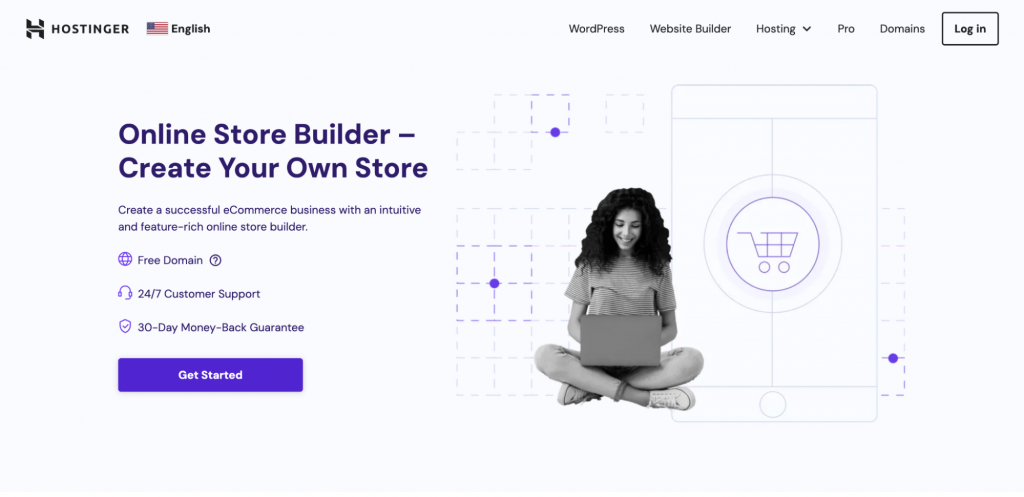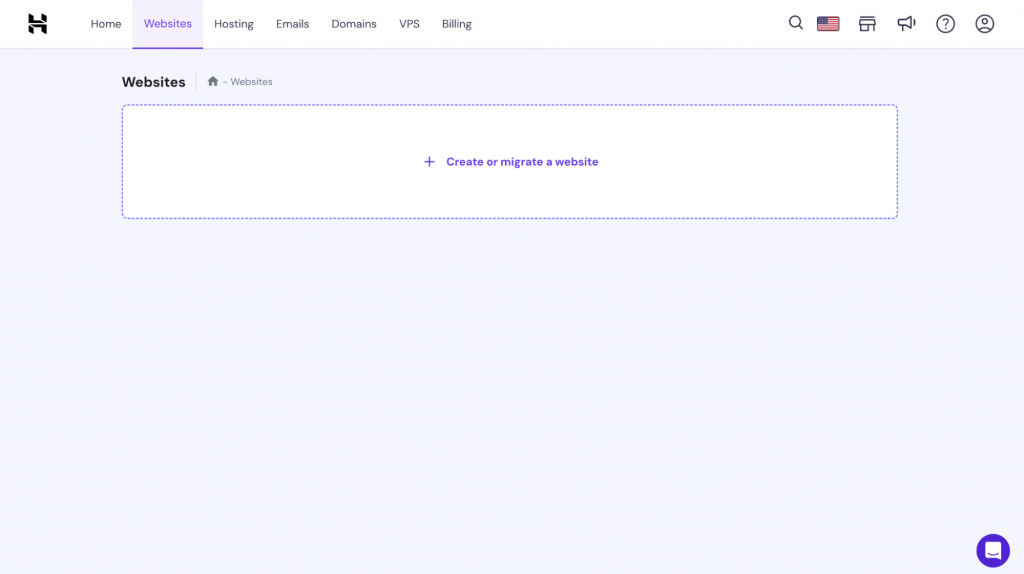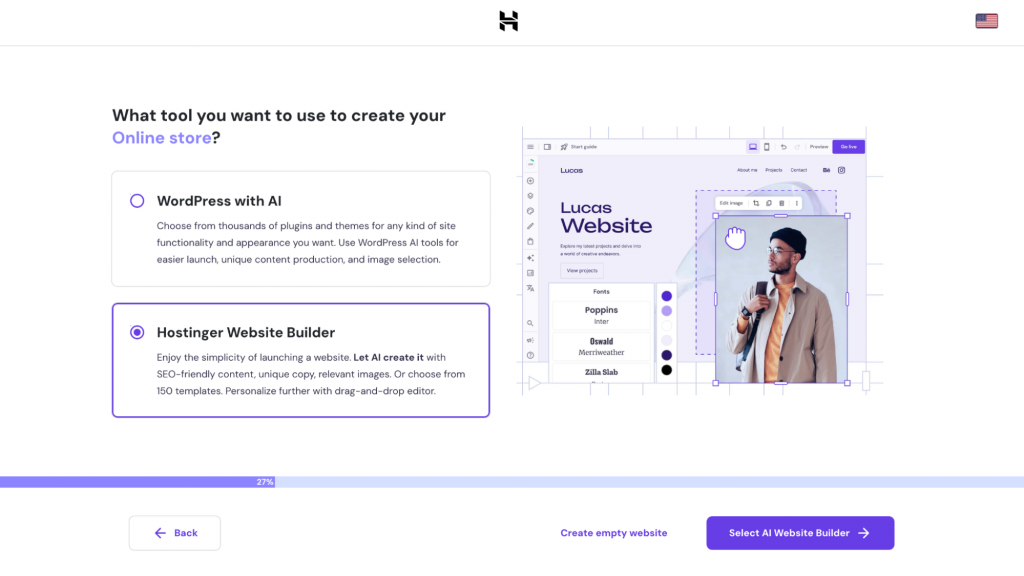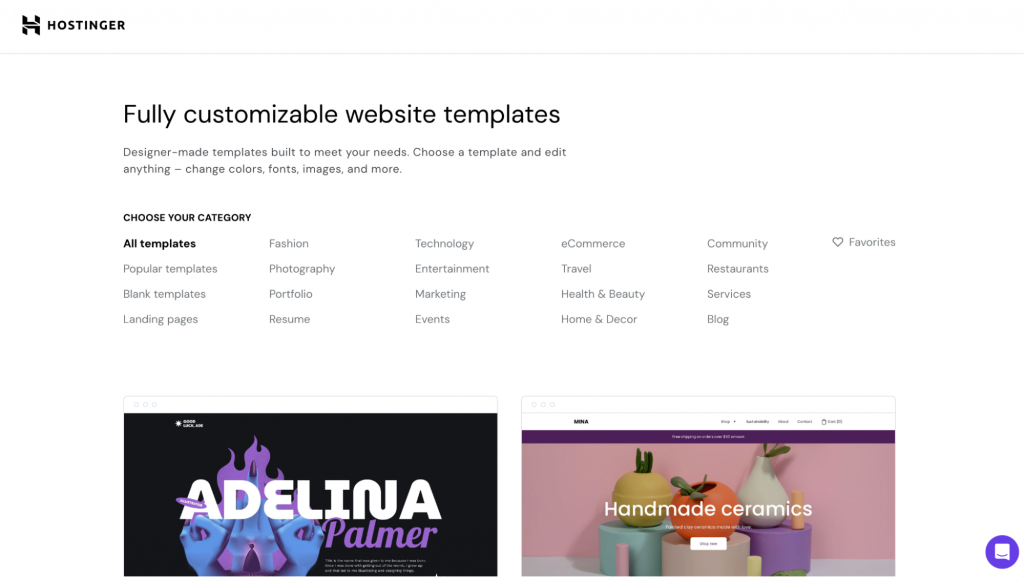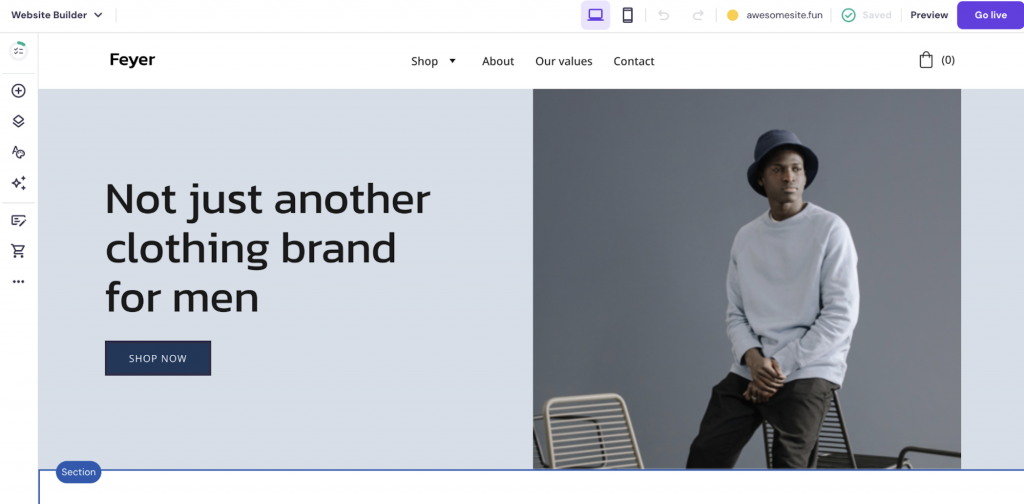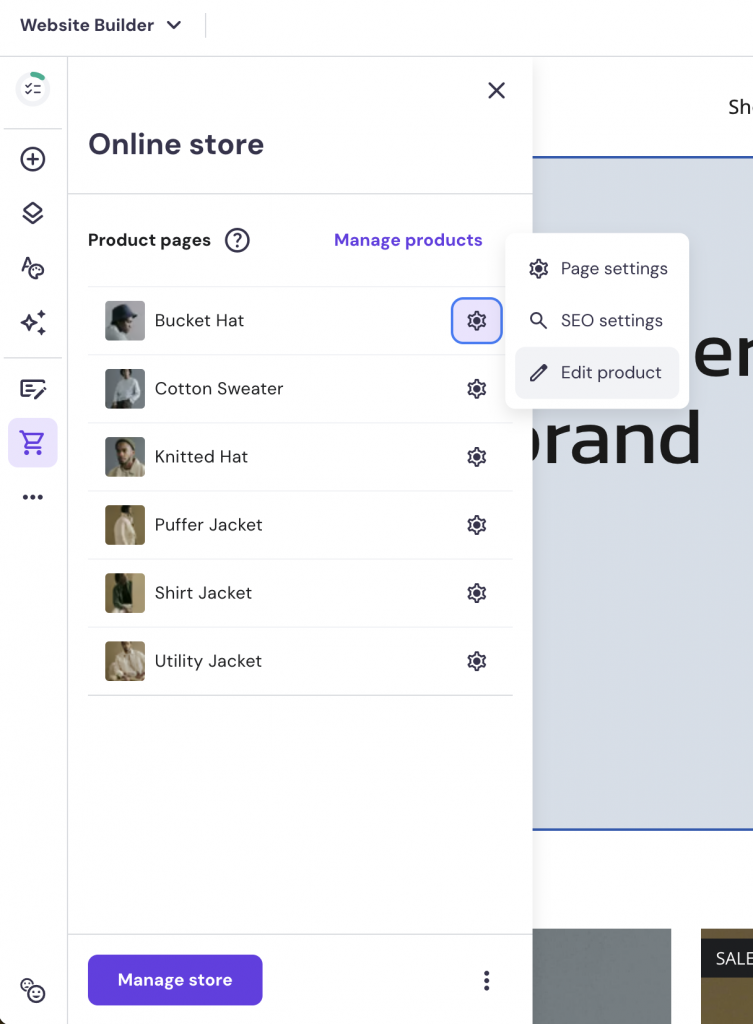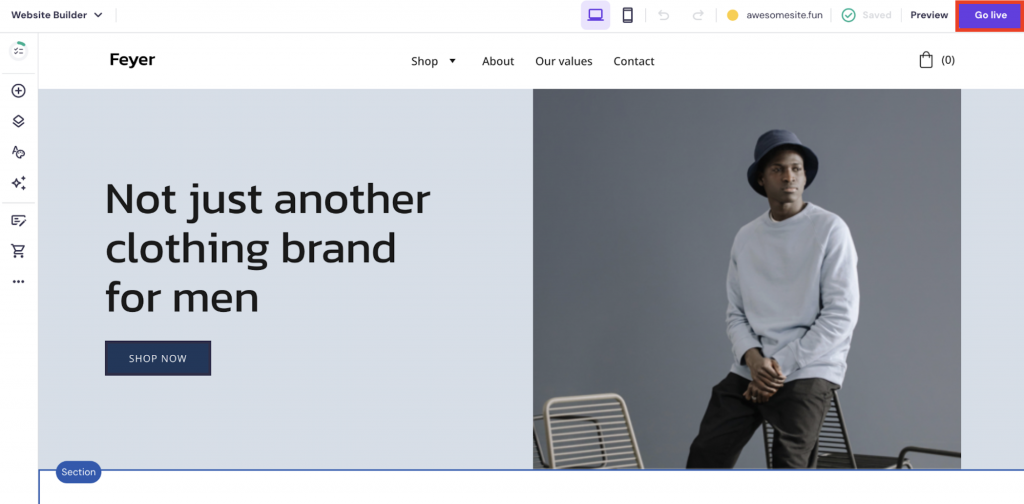How to Start a T-Shirt Business in 2024
If you are looking to start a new online business venture, consider launching an online T-shirt store. Besides a big demand for custom T-shirts with fun slogans or pop culture designs, various companies also use T-shirts for branding or promotional purposes.
In addition to being lucrative, a new T-shirt business can be low-risk and cost-effective with the right strategy. For example, with the print-on-demand business model, it’s possible to maintain a stream of income just by creating your own T-shirt designs and leaving the production and shipping to a fulfillment company.
Our step-by-step guide will explain the whole process, from choosing the right niche to launching and promoting your online T-shirt business. We will also answer some of the most common questions about selling T-shirts online.
Download business plan template
How to Start a T-Shirt Business
Starting your own T-shirt business can be a rewarding and exciting experience. Set yourself up for success by following these 10 steps, covering everything from choosing your business idea and niche to your online T-shirt store setup and branding ideas:
1. Understand the T-Shirt Business Market
To start selling T-shirts and making money online, you need to understand how the T-shirt printing business works.
By focusing on a specific niche, following market trends, and conducting thorough research, you’ll be well-equipped to navigate the competitive landscape of the T-shirt industry.
Choose Your Niche
Identifying a specific niche is the cornerstone of a successful T-shirt business. Whether you focus on sustainable fashion, niche pop culture references, or innovative print and design technologies, defining your niche helps you carve out a unique space in the market.
This specificity attracts a dedicated customer base who shares your brand’s values and interests. Reflect on what sets your T-shirt business apart and how it can meet your target audience’s needs.
Tap Into the Latest Market Trends
The T-shirt market is vibrant and ever-evolving, with growth projected to continue soaring. To stay ahead, keep a pulse on emerging trends in the fashion industry, technological advancements in printing, and shifts in online retail dynamics.
Use tools like Google Trends to analyze the current market and consumer behavior. For instance, you might notice that certain niches and T-shirt design ideas are highly seasonal, such as Christmas jumpers.
Understanding these trends allows you to adapt and innovate, ensuring your products meet current consumer demands while also being positioned for future shifts in the market.
Embrace Sustainable Practices
Integrating eco-friendly materials like organic cotton or recycled polyester into your product line will appeal to environmentally conscious buyers and position your eCommerce business as a responsible player in the market.
Highlighting your sustainable practices in your marketing can further enhance your brand’s appeal to a broader audience looking for ethical and eco-conscious T-shirts.
Conduct Market Research
Effective market research is the cornerstone of your small business. Utilize analytical tools and social platforms to gain insights into your audience’s preferences, behaviors, and demographics.
Social media platforms, especially Instagram and TikTok, can be powerful tools for engaging with your potential buyers and gauging their responses to your designs and concepts.
Similarly, engaging with potential customers on platforms like Reddit can offer invaluable feedback and ideas, allowing you to tailor your designs and marketing messages more effectively.
Finally, check out your competitors to get a grasp on what works in the industry.
2. Plan Your T-Shirt Business
Focusing on setting clear goals, understanding your target market, and developing a unique selling proposition (USP) is essential for running a thriving T-shirt business online.
Set Clear Business Goals and Objectives
Begin by defining what you hope to achieve with your online T-shirt business.
When writing your business plan, consider both short-term objectives, like launching your first collection or reaching a sales milestone within the first year, and long-term goals, such as expanding your T-shirt line or achieving a certain market share.
Your goals should be specific, measurable, achievable, relevant, and time-bound (SMART) to guide your business strategy effectively. Our tutorial on how to start a business looks at all the aspects of setting up a business in more detail.
Understand Your Target Audience
It is crucial to know your ideal buyers inside out. Consider their demographics, interests, purchasing behavior, and what drives their buying decisions.
This understanding will inform not just your T-shirt design ideas but also your marketing strategies and choice of sales channels. Engage with potential customers through surveys, social media, and market research to gather insights.
Tools like Google Trends and social media platforms can offer real-time data on consumer preferences and trends.
Develop a Unique Selling Proposition (USP)
Your USP sets you apart from competitors and gives customers a reason to choose your online boutique. It could be anything from eco-friendly materials, innovative designs, customization options, or superior quality.
Highlight what makes your T-shirts unique and why they offer more value or a better experience than others in the market. Your USP should resonate with your target market and be reflected in every aspect of your business, from product development to marketing.
Suggested Reading
Make sure you understand the landscape of running an online business like the back of your hand:
Do I Need a Business License to Sell Online?
How to Sell Online Successfully
3. Create T-Shirt Designs
Designing your T-shirts is a creative process where your brand’s identity and appeal to your ideal buyer come to life. Here’s how to ensure your designs stand out:
Utilize Design Software
Leveraging professional design software like Adobe Photoshop, Illustrator, or free alternatives like GIMP and Canva can significantly enhance the quality of your T-shirt designs. These tools offer extensive features that allow for intricate designs, precise editing, and formatting suitable for high-quality printing.
Hire Professional Designers
If you’re not confident in your design skills, consider hiring professional designers to design T-shirts for you. Platforms like Fiverr, Upwork, Dribbble, and Behance are excellent places to find talented designers with a range of styles and rates. Review portfolios to find a designer whose style aligns with your vision and brand identity.
Focus on Design Quality and Uniqueness
High-quality and unique designs are what will set your T-shirt brand apart from competitors. Invest time in creating T-shirts that look good and resonate with your target market. Consider current trends, cultural references, and timeless themes that appeal to your customers. However, make sure your T-shirt design follows copyright laws and doesn’t copy other clothing brands.
Create Mockups
Before finalizing your designs, create mockups to see how they look on actual T-shirts. Tools like Printful’s mockup generator, Placeit, and Custom Ink’s Design Lab allow you to visualize your designs on various T-shirt styles and colors, helping you make informed decisions about final adjustments.
Gather Feedback
Use social media platforms and forums like Reddit to share your mockups and gather feedback from potential customers and other designers. This can provide valuable insights about your design and highlight areas for improvement.
4. Choose the Right eCommerce Platform
While you can sell T-shirts online on third-party eCommerce platforms, having your own business website will help you stand out from the competition. We recommend using Hostinger’s eCommerce Website Builder to help you launch an online store if you have no prior experience in building a T-shirt brand online.
Hostinger eCommerce Website Builder
For those new to eCommerce, Hostinger’s Website Builder stands out as the user-friendly choice. Our builder eliminates the need for coding knowledge by offering an intuitive drag-and-drop interface, enabling everyone to make an eCommerce business website.
Key Features
- User-friendly design tools. Choose from 150 customizable templates that are both responsive and adaptable to your specific needs. The drag-and-drop editor allows for easy adjustments of colors, typography, and more, ensuring your site matches your brand.
- Efficient inventory management. A streamlined dashboard enables you to oversee inventory, shipping, and taxes seamlessly, simplifying the backend operations of your store.
- Payment flexibility. Support for over 20 payment options, including major platforms like PayPal and Stripe, without any additional transaction fees.
- Cost-effective plans. Hostinger Website Builder is included with all hosting plans, and you can easily upgrade your plan as your store grows in hPanel.
Getting started is simple:
- Choose a suitable web hosting plan. For online stores, we recommend Business Hosting or Cloud Startup plans to ensure enough resources.
- Pick a domain name that reflects your T-shirt company. Ensure it’s memorable and relevant to aid in brand recall and searchability. Read more on how to pick the right domain name if you feel stuck.
- After setting up your account, access hPanel to manage your hosting plan and use the website builder.
5. Set up Your Online Store
Setting up your online clothing store with Hostinger Website Builder is a straightforward process that can be completed in a few steps. Here’s a guide to get you started:
- Navigate to the Website section in hPanel and click on Create or migrate a website.
- Follow the onboarding flow and choose to create a new site using Hostinger Website Builder.
- If you don’t want AI to design your website from scratch, select a template that best reflects your T-shirt niche and eCommerce store.
Hostinger Website Builder offers 150 website templates suitable for various niches. Feel free to choose any template – all of them are fully customizable and mobile-friendly. This ensures your online store will automatically adjust and look great on any device, providing an optimal shopping experience for mobile and tablet users.
- Use the drag-and-drop editor to personalize your chosen template. Adjust elements like colors, fonts, and page layouts to align with your brand identity. The grid system ensures each element is aligned neatly, contributing to a polished and professional online boutique.
- After you’re done designing your website, open the Store manager side menu and add T-shirts to your store.
Pro Tip
When setting up your product listings, pay special attention to the quality and size of your product photos. Optimize images for the web to ensure they are clear and attractive without unnecessarily slowing down your page load times. This is one of the main website optimization strategies, crucial for retaining visitors and improving SEO.
- In the Store manager, navigate to Store Settings → Payments, and connect your store to the preferred payment gateways, such as PayPal and Stripe.
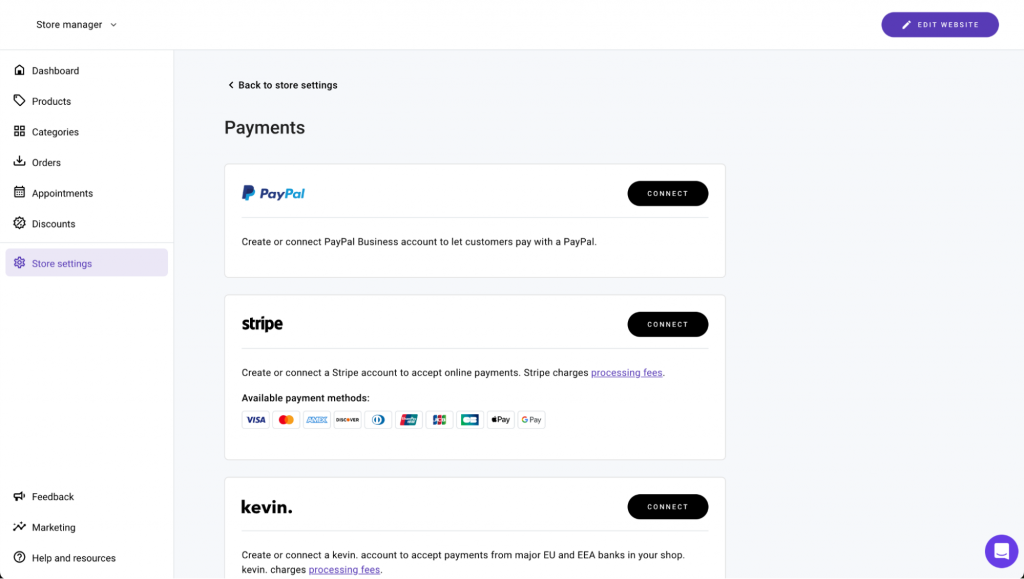
- Before going live, preview your site to ensure everything looks and functions as expected on both desktop and mobile devices.
- Once satisfied, click Go live and publish your eCommerce website.
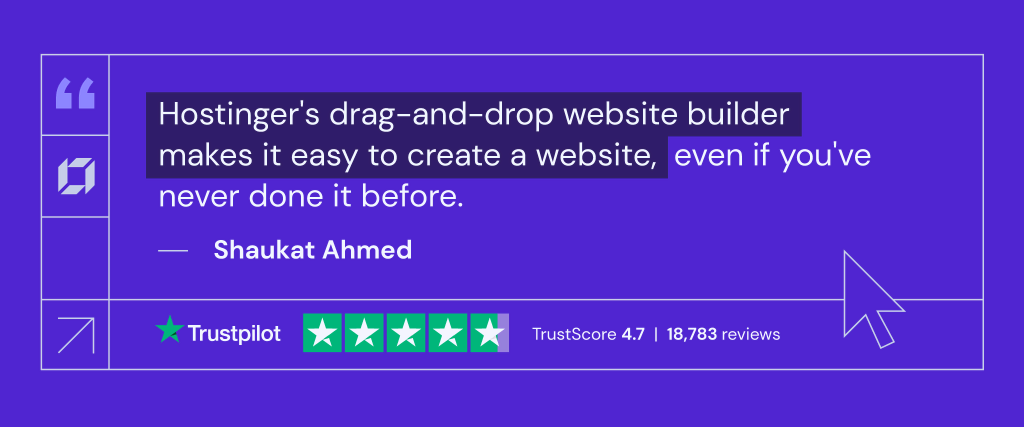
6. Learn About T-Shirt Manufacturing and Suppliers
To kickstart your T-shirt business, finding a dependable supplier is key.
Purchasing in bulk from a wholesale T-shirt supplier, such as The Adair Group, Jones T-Shirts, or Shirt Space in the US, can be both cost and time-efficient. Prices usually decrease with higher quantities, making bulk purchases more economical.
For new brands with tighter budgets, it’s common to have the printing company handle the shirt orders. Commonly, experienced vendors are preferred as they offer a wide range of styles and fabrics and have a deeper understanding of T-shirt manufacturing.
When selecting your manufacturing partners, consider the following:
- Customization needs. More customization options may require higher minimum order quantities (MOQs). For smaller brands, digital printing is cost-efficient for low volumes despite higher costs, while larger orders benefit from reduced unit prices through wholesale pricing.
- Location. Be sure to select a manufacturer that works where your target audience lives.
- Partnership potential. Select manufacturers that align with your brand’s vision, ethics, and quality standards.
Choosing the Right Material and Printing Technique
When selecting the fabric for your T-shirts, it’s important to choose materials that strike the right balance between durability and comfort.
Look for fabrics that combine strength with softness, ensuring they are both long-lasting and breathable. 100% cotton is a popular choice for most T-shirts due to its durability, cooling effect, hypoallergenic properties, and easy maintenance.
Printing techniques refer to the process of transferring designs, patterns, and graphics onto fabrics and other materials. The most common printing methods include the following:
- Screen printing. Excellent for bulk production with simpler designs. Screen printing is cost-effective for T-shirt designs, not requiring complex or colorful prints.
- Digital or direct-to-garment printing. Ideal for detailed designs, this method prints directly onto the garment but is less effective on dark fabrics.
- Other methods. Dye sublimation and vinyl printing offer great finishes and low setup costs, which are suitable for different fabric types.
T-Shirt Dropshipping or Print-on-Demand Service
If you want to reduce upfront costs and avoid the complexities of inventory management, consider starting dropshipping or using print-on-demand services.
Both models operate by partnering with external suppliers who handle the production and, in some cases, the shipping of products directly to the customer upon order. This means the business doesn’t need to hold any physical stock, making it an attractive option for those with limited storage space or financial resources.
| Aspect | Print-on-Demand | Dropshipping |
| Inventory | No need to hold inventory, products are made to order | No inventory is required, supplier ships the products directly |
| Investment | Low initial investment, costs are incurred as orders are placed | Minimal upfront investment, costs are linked to order fulfillment |
| Customization | High level of product customization, allowing for unique designs and branding | Limited customization. Products are typically sold as they are from the supplier |
| Fulfillment | Supplier handles production and often shipping, simplifying logistics | Supplier takes care of shipping, but businesses might need to manage returns |
| Profit Margin | Lower profit margins due to higher production costs per item | Potentially higher profit margins, but dependent on supplier prices |
| Control | Less control over production quality and fulfillment speed | Less control over inventory quality and shipping reliability |
| Scalability | Scalable, but unit costs remain consistent, affecting margins | Scalable with the potential for negotiating better terms as volume increases |
7. Price Your Products
Pricing your products correctly is essential for making your online T-shirt business profitable and positioning it effectively in the market. It strikes a balance between covering costs, attracting customers, and competing successfully against other brands.
To price your T-shirts effectively, follow these steps:
1. Calculate Production Costs
Determine your fixed costs, such as rent, salaries, or machinery, and variable costs, like materials, inks, and designs. Use the formula:
Total product cost = Fixed costs + Variable costs
Then, find the cost per unit by dividing the total product cost by the number of units produced.
2. Choose a T-Shirt Pricing Strategy
A well-crafted pricing strategy enhances profitability and competitive positioning, guides a business in adapting to market changes, influences customer perception, and drives revenue growth.
The most popular T-shirt pricing strategies include the following:
- Markup pricing. For a desired profit margin, add this percentage to your production cost. For instance, for a 35% profit on a $10 production cost, price the T-shirt at $13.50.
- Keystone pricing. Apply a 100% markup by doubling the production cost. A $10 cost would lead to a $20 price.
- Competitive pricing. Set your prices by comparing them with competitors, deciding whether to price higher for a premium offer or lower to appeal to budget-conscious buyers.
Choosing the right pricing strategy for your T-shirts involves understanding your market position, cost structure, customer base, and competitive landscape, and aligning these factors with your overall business goals and value proposition.
For example, markup pricing is great for small business owners looking for a simple way to ensure a profit on each item sold, such as a small eCommerce store starting out with a limited range of custom T-shirts. It allows for easy calculation and adjustment of prices to cover costs and achieve desired profit margins without the need for complex pricing models.
Pro Tip
Use discounts and promotions to attract customers, but do so strategically to avoid undercutting your profit margins. For instance, consider time-limited offers or bundle deals that encourage larger purchases while maintaining overall profitability.
8. Plan Shipping and Fulfillment
Navigating shipping and fulfillment is pivotal in building a successful online business, impacting everything from operational efficiency to customer satisfaction. The choice between self-fulfillment and leveraging third-party logistics can significantly affect your ability to sell T-shirts, scale, control costs, and meet customer expectations. As a result, you should weigh the pros and cons of each option carefully.
Choosing Between Self-Fulfillment and Third-Party Logistics
When embarking on a T-shirt business, a critical decision is whether to handle shipping and fulfillment in-house (self-fulfillment) or to outsource these tasks to a third-party logistics provider. Self-fulfillment may be more feasible for smaller businesses, as it offers complete control over the storage, packing, and shipping processes.
However, as the business expands, the efficiency and scalability offered by third-party services like ShipBob become invaluable, automating and streamlining the shipping process and integrating with ecommerce platforms for real-time order processing.
Self-Fulfillment Pros and Cons:
| Pros | Cons |
| Full control over the process | Time-consuming |
| Cost-effective for small-scale operations | Hard to scale |
| Direct customer interaction | High learning curve |
Third-Party Logistics Pros and Cons:
| Pros | Cons |
| Easy to scale | Less control |
| Low learning curve | Dependency on a third-party |
| Cost-effective at a larger scale | Costly for small order volumes |
Effective Packaging Strategies
The way T-shirts are packaged affects not only the safety and condition of the product upon arrival but also the customer’s perception of your brand.
The choice of packaging – whether mailers for smaller items or boxes for larger or more delicate orders – should balance cost-effectiveness and protection. Utilizing eco-friendly packaging can further elevate your brand in the eyes of environmentally conscious customers, signaling your commitment to sustainable T-shirt production.
Managing Shipping Costs and Delivery Times
An essential aspect of shipping and fulfillment is the management of costs and delivery times. Transparency in shipping rates is crucial, as unexpected costs can lead to customer dissatisfaction.
Offering a variety of shipping options, such as standard and expedited shipping, caters to different customer needs and expectations. Implementing a reliable order tracking system can also enhance the customer experience by providing them with real-time updates on their orders.
9. Establish Customer Support and Feedback
The quality of customer support can make or break a T-shirt business.
Excellent customer service entails not only addressing customer issues promptly and effectively but also proactively enhancing their overall experience with your brand. This focus on customer satisfaction is key to building a loyal customer base and enhancing your brand’s reputation.
To elevate customer service and foster a culture of continuous improvement, it’s essential to engage with your customers and value their feedback actively. Here’s how you can implement a robust feedback system:
- Implement regular feedback mechanisms. Set up monthly surveys or feedback forms to collect customer opinions consistently.
- Promote feedback opportunities. Actively encourage feedback by providing links to surveys on purchase confirmations, social media posts, and a dedicated feedback section on your website.
- Analyze feedback for actionable insights. Regularly review customer feedback to identify common themes and areas for improvement, then use this information to enhance customer service, quality, and custom T-shirt design.
Handling Returns and Exchanges
A clear and easily accessible returns and exchanges policy is crucial for customer trust and satisfaction. The process should be efficient and customer-friendly, potentially including free returns to enhance the customer experience.
Understanding the reasons behind returns and exchanges can also provide your T-shirt company with valuable insights for future product development and quality improvements.
10. Market and Promote Your T-Shirt Business
Creating a compelling eCommerce marketing strategy is crucial for boosting traffic and sales for your T-shirt business. Here’s how to break down your strategy into focused activities:
Optimize your website and content to improve your search engine rankings and drive more traffic to your online store. For a T-shirt business, this could involve using keywords like “unique graphic T-shirts” or “organic high-quality T-shirts” when writing your product descriptions and blog posts to attract the right audience.
Content Marketing
Create engaging content that resonates with your target audience, establishing your brand’s authority. Share stories behind your designs, how-to guides on styling T-shirts, or sustainability practices in production to keep your audience engaged and informed.
Social Media Marketing
Social media stands as a dynamic tool for enhancing the visibility of your T-shirt business and engaging directly with your customers. Platforms like Instagram and Pinterest offer unique opportunities to visually showcase your products, get more clients, and build a community around your brand.
Paid Advertising
Paid advertising, or Pay-Per-Click (PPC), complements your organic efforts by placing your T-shirt business in front of targeted audiences quickly and effectively. Utilizing platforms such as Google Ads and Facebook Ads allows you to create specific, measurable campaigns that can drive immediate traffic and conversions. Note that you need some marketing budget to run effective PPC campaigns.
Email Marketing
Grow your email list to keep your customers informed about new releases and special offers. Use retargeting campaigns to re-attract visitors who browsed your store but didn’t make a purchase, reminding them of the products they viewed with personalized messages and offers.
Conclusion
Launching a successful online T-shirt business in 2024 with Hostinger Website Builder is a feasible and exciting venture regardless of your technical expertise. Key steps to ensure the success of your small business include:
- Market insight and planning. Start with thorough market research, a business plan, and clear business objectives. Understand your niche, target customers, and trends to position your brand effectively.
- Design and eCommerce setup. Create a unique T-shirt store website design using professional tools or hiring designers. We recommend choosing one of the best eCommerce website builders for quick setup and launch.
- Product and pricing. Decide on your production approach, focusing on fabric quality. Develop a competitive pricing strategy that ensures profitability.
- Logistics and customer engagement. Plan a scalable shipping strategy and establish strong customer service practices. Use customer feedback to refine your offerings.
- Marketing strategy. Utilize SEO, content marketing, social media, and email marketing to build brand visibility and drive sales.
By following these steps and leveraging the AI-powered features of Hostinger Website Builder, you can create a thriving T-shirt business that offers a delightful shopping experience for your customers.

How to Start a T-Shirt Business FAQ
Find answers to the most common questions about running an online T-shirt store below.
How Profitable Are T-Shirt Businesses?
T-shirt businesses can be quite profitable with the right strategy. Margins vary, but with efficient production and smart marketing, a healthy profit is achievable. It’s all about offering unique designs and tapping into current trends.
What Should I Do Before I Begin Selling T-Shirts?
Before selling, research your target market and competition. Develop unique designs that resonate with your audience. Also, consider the quality and sustainability of your materials, as these can be key differentiators.
How Much Profit Should I Make on Each T-Shirt?
Your profit per T-shirt should cover costs and leave a healthy margin; typically, a 50-70% markup on production costs is common. This accounts for other expenses and ensures profitability.
Can I Start a Shirt Business With No Money?
Yes, you can start a T-shirt business from home without initial funds. However, it will be challenging. Consider dropshipping or print-on-demand T-shirt services, which eliminate upfront costs for inventory and manufacturing, allowing you to begin with minimal investment.
